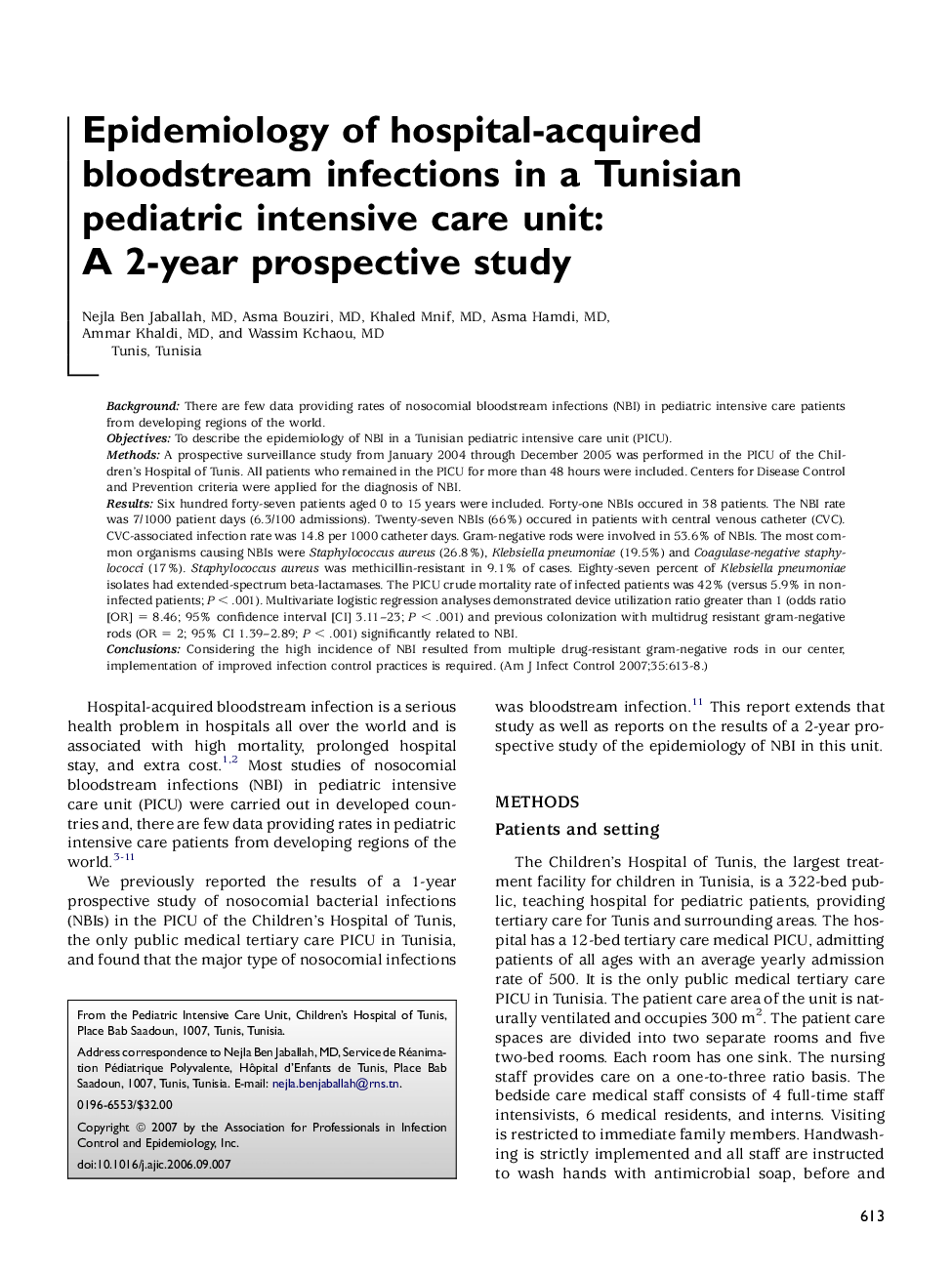| کد مقاله | کد نشریه | سال انتشار | مقاله انگلیسی | نسخه تمام متن |
|---|---|---|---|---|
| 2640570 | 1563566 | 2007 | 6 صفحه PDF | دانلود رایگان |

BackgroundThere are few data providing rates of nosocomial bloodstream infections (NBI) in pediatric intensive care patients from developing regions of the world.ObjectivesTo describe the epidemiology of NBI in a Tunisian pediatric intensive care unit (PICU).MethodsA prospective surveillance study from January 2004 through December 2005 was performed in the PICU of the Children's Hospital of Tunis. All patients who remained in the PICU for more than 48 hours were included. Centers for Disease Control and Prevention criteria were applied for the diagnosis of NBI.ResultsSix hundred forty-seven patients aged 0 to 15 years were included. Forty-one NBIs occured in 38 patients. The NBI rate was 7/1000 patient days (6.3/100 admissions). Twenty-seven NBIs (66%) occured in patients with central venous catheter (CVC). CVC-associated infection rate was 14.8 per 1000 catheter days. Gram-negative rods were involved in 53.6% of NBIs. The most common organisms causing NBIs were Staphylococcus aureus (26.8%), Klebsiella pneumoniae (19.5%) and Coagulase-negative staphylococci (17%). Staphylococcus aureus was methicillin-resistant in 9.1% of cases. Eighty-seven percent of Klebsiella pneumoniae isolates had extended-spectrum beta-lactamases. The PICU crude mortality rate of infected patients was 42% (versus 5.9% in noninfected patients; P < .001). Multivariate logistic regression analyses demonstrated device utilization ratio greater than 1 (odds ratio [OR] = 8.46; 95% confidence interval [CI] 3.11–23; P < .001) and previous colonization with multidrug resistant gram-negative rods (OR = 2; 95% CI 1.39–2.89; P < .001) significantly related to NBI.ConclusionsConsidering the high incidence of NBI resulted from multiple drug-resistant gram-negative rods in our center, implementation of improved infection control practices is required.
Journal: American Journal of Infection Control - Volume 35, Issue 9, November 2007, Pages 613–618